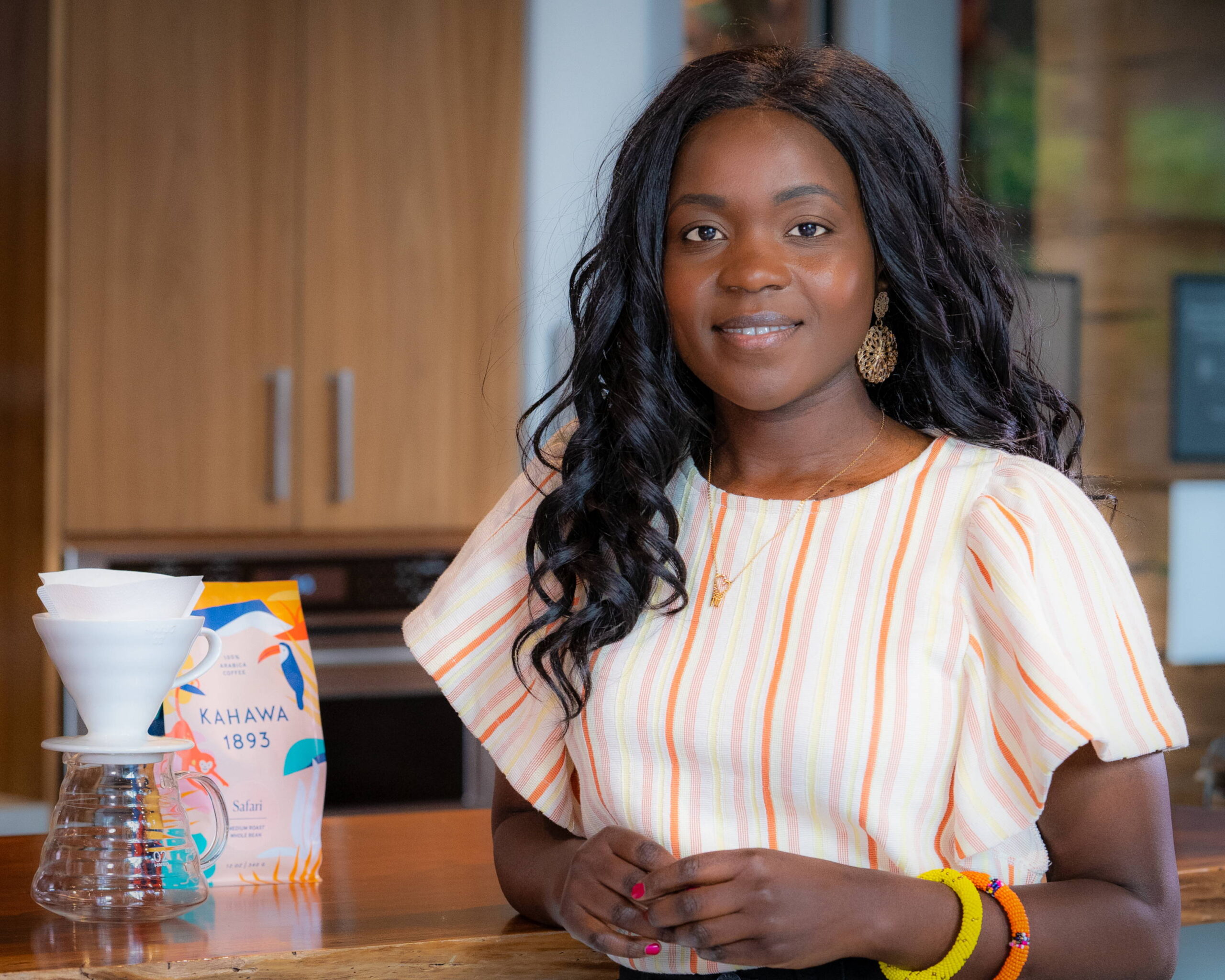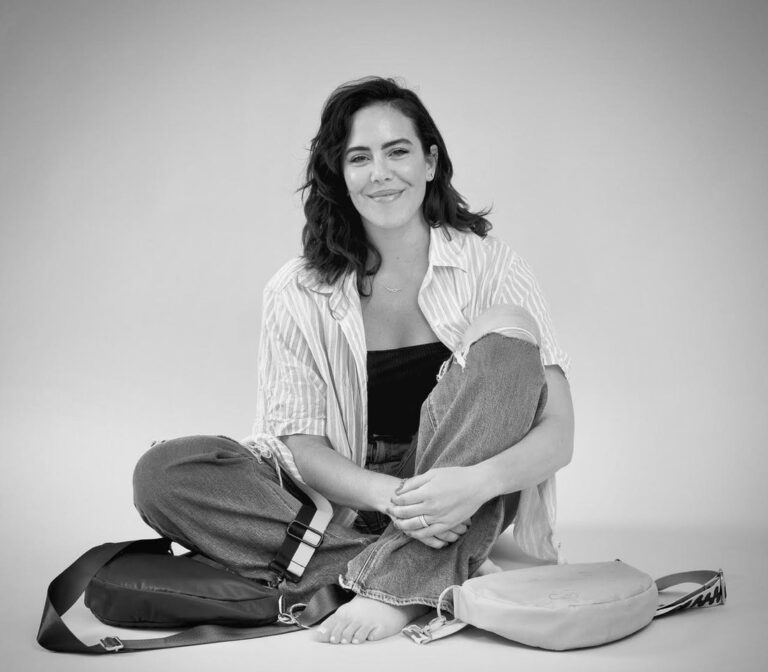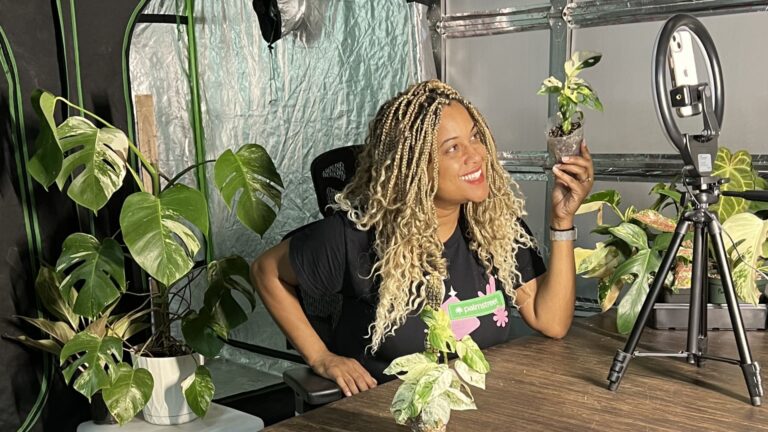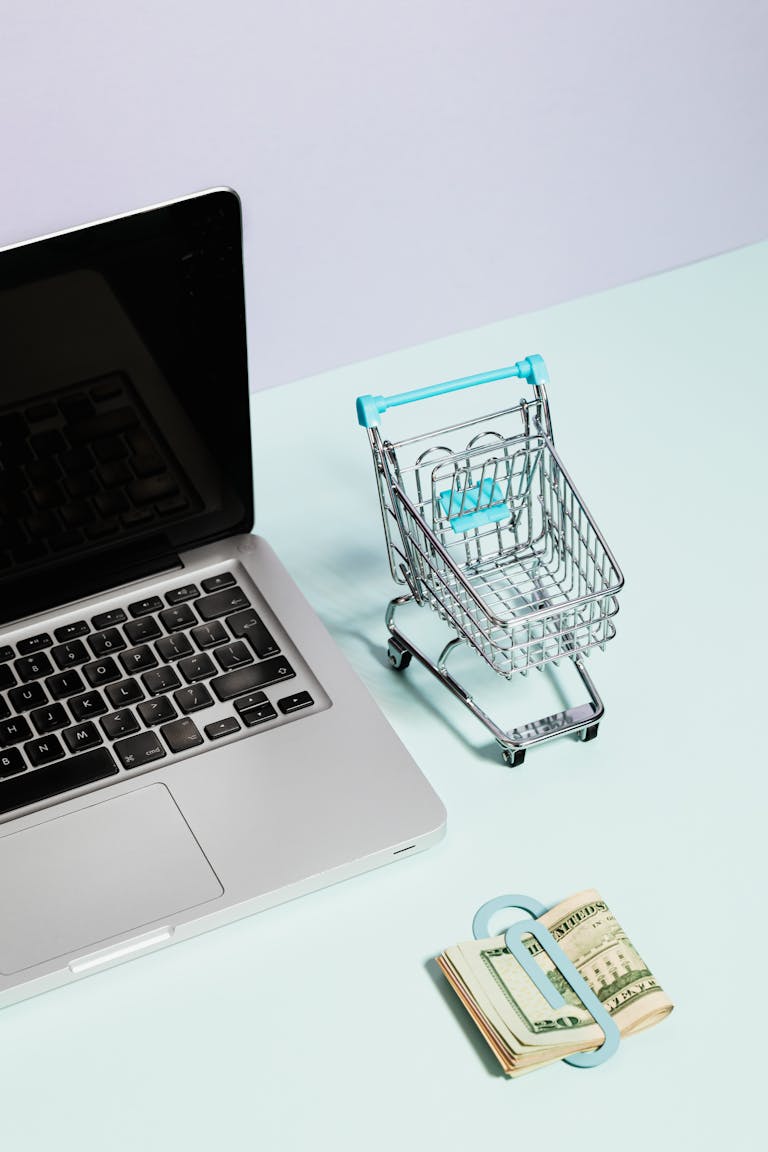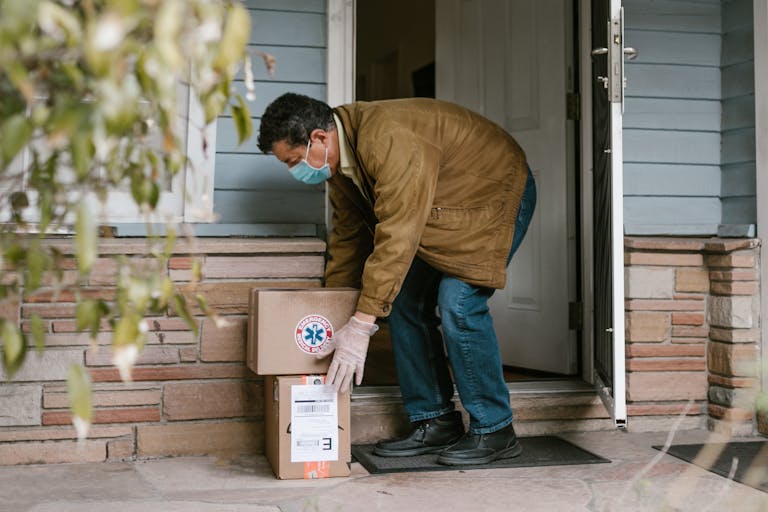How I Went from Wall Street to Building a $3M Coffee Brand That Empowers Women Farmers
Learn how Margaret Yumo left Wall Street to start Kahawa 1893, a coffee company that brings in $3 million a year, empowering African women farmers. Here’s the full story.
Key Takeaways
- Margaret Yumo left her high-paying Wall Street job to pursue her passion for coffee, building a $3 million coffee brand.
- Kahawa 1893 sources its beans from women farmers in Africa, helping to uplift and empower them.
- Margaret’s journey is filled with risk, resilience, and scaling challenges, from self-funding her business to overcoming $50,000 in debt.
- Kahawa 1893’s success skyrocketed after securing deals with major retailers like Trader Joe’s, Target, and Sprouts.

Introduction: Wall Street Exec to Coffee Entrepreneur
It’s one thing to dream about leaving a comfortable job for your passion. It’s another thing entirely to actually do it—and succeed. That’s the story of Margaret Yumo, a former Wall Street exec who gave it all up to start a coffee business. Not just any coffee business, but one with a mission: to empower African women farmers while delivering high-quality, specialty coffee to the world.
Today, Margaret’s company, Kahawa 1893, pulls in $3 million a year. But her journey was anything but easy. From balancing Wall Street work with her coffee startup to accumulating $50,000 in debt during the pandemic, Margaret faced an uphill battle. Here’s how she made it work—and how she’s changing the game for African women farmers in the process.
Taking the Leap: Why Margaret Left Wall Street
Imagine this: you’re working on Wall Street, one of the most coveted positions in the world. You’ve got a secure paycheck, a prestigious career path, and a future that looks financially sound. But something’s off. That’s exactly what Margaret experienced.
A High-Pressure Career in Finance
Margaret was excelling on Wall Street, but the pressure and the lack of passion started to wear her down. “I survived on coffee,” she says, reminiscing about those long, grueling hours. Despite her achievements, she felt disconnected from her work. Sure, she was moving up in the world of finance, but what was she really doing? Where was the impact?
For Margaret, the answer wasn’t in finance. It was in coffee—a product that had shaped her childhood and her homeland in Kenya.
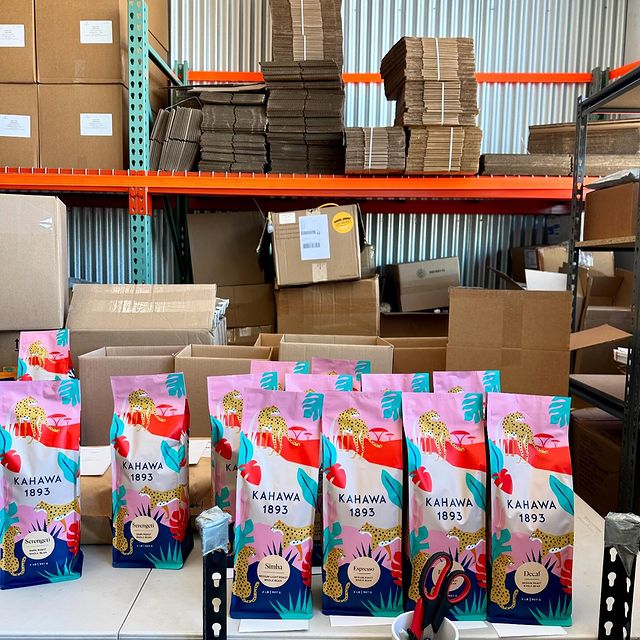
Why Coffee? The Kenya Connection
If you’re going to leave Wall Street, you better have a damn good reason. For Margaret, it wasn’t just about chasing profits. It was personal.
Growing Up on a Coffee Farm in Kenya
Margaret grew up in Kisii, Kenya, a region known for its rich agricultural land. Her parents were farmers and traders, deeply involved in the coffee industry. But coffee wasn’t seen as a lucrative crop for small-scale farmers. Worse, the women who worked the fields were often underpaid and undervalued.
Growing up, Margaret witnessed the struggles of these women firsthand. They worked long hours, often for little pay, while their male counterparts dominated the industry. This left a lasting impression on her and became the seed that would later grow into Kahawa 1893.
Combining Passion with Purpose
When Margaret thought about starting her own business, it wasn’t just about creating a product. It was about creating impact. “I wanted to empower the women who were doing the hard work,” she explains. Coffee was the perfect vehicle. It was something she understood, something she was passionate about, and it was a way to make a real difference.
But having passion and purpose wasn’t enough. Margaret still had to figure out how to build a successful business from the ground up.
Building Kahawa 1893: The Grind Begins
Margaret’s first year running Kahawa 1893 wasn’t glamorous. In fact, it was anything but. She didn’t have a team, she didn’t have investors, and she certainly didn’t have the luxury of time.
Running the Business Solo
In the early days, it was just Margaret. She did everything—from sourcing the coffee to roasting the beans, to packing orders, to doing customer service. She was running the entire operation out of her New York City apartment.
“I was working around the clock,” she recalls. She’d wake up thinking about coffee and go to bed thinking about coffee. She was even delivering packages to customers herself. This wasn’t some cushy, glamorous startup experience. This was a grind, and Margaret was all in.
Self-Funding and Sacrifices
Like many entrepreneurs, Margaret didn’t have a big budget to work with. She funded everything out of her own savings, reinvesting any profits back into the business. There were no investors. There was no safety net.
But the sacrifices paid off. Kahawa 1893 slowly started to gain traction, and Margaret knew she was on to something. However, the road was about to get a whole lot bumpier.
The Pandemic Hits: Facing $50,000 in Debt
Everything was going well until COVID-19 struck. Like so many small businesses, Kahawa 1893 was hit hard. Overnight, Margaret’s business evaporated. The orders stopped coming in, and she found herself facing $50,000 in credit card debt.
Losing Business Overnight
“It was like the business disappeared overnight,” Margaret explains. With the world in lockdown and people cutting back on non-essential spending, coffee was one of the first things to go. “I didn’t know what was going to happen next. It was terrifying.”
For a moment, it seemed like her dream was over. Margaret was on the brink of taking a part-time job just to keep her head above water. But then, something incredible happened.

The Game-Changer: Trader Joe’s Comes Knocking
Just when things looked their darkest, Margaret caught a break. And not just any break—a deal with Trader Joe’s, one of the largest grocery retailers in the United States.
The Trader Joe’s Deal That Saved the Business
Trader Joe’s approached Margaret about bringing Kahawa 1893 into their stores. This was no small opportunity. For the first time, her coffee was going to be available in hundreds of locations across the country. It was a game-changer.
But with opportunity comes pressure. Margaret now had to scale—fast. She needed to secure funding, streamline her supply chain, and navigate the chaos of a global pandemic.
Scaling Challenges
Scaling a business is never easy, but scaling during a pandemic is next-level hard. Margaret had to figure out how to meet the massive demand from Trader Joe’s while dealing with supply chain issues, sourcing delays, and the pressure to perform. But she made it work.
Within months, Kahawa 1893 was not only in Trader Joe’s but was also in talks with other major retailers like Target and Sprouts.
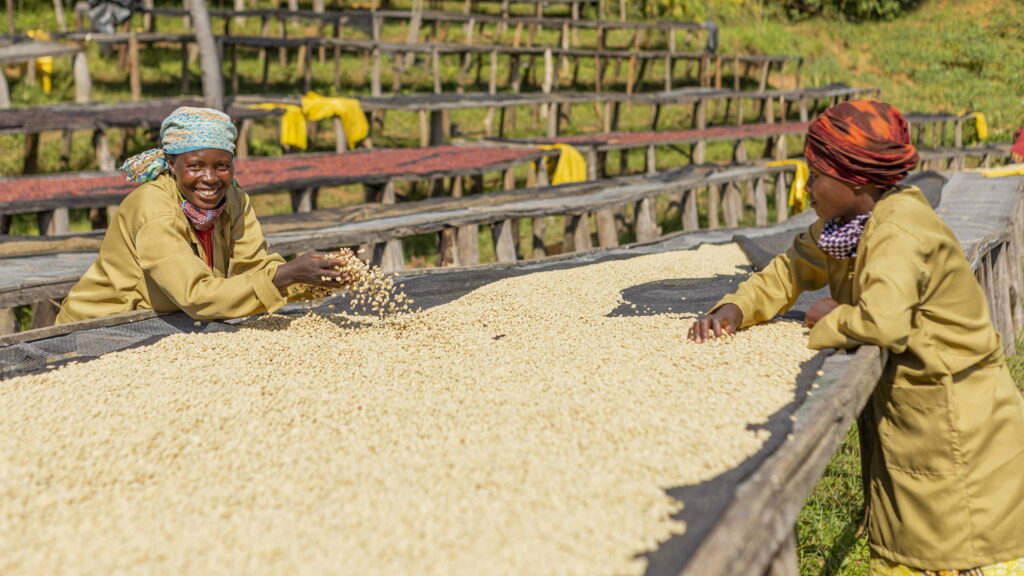
Empowering Women Farmers: The Mission Behind the Brand
At its core, Kahawa 1893 isn’t just about selling coffee. It’s about creating impact—and that impact starts with the women farmers who grow the beans.
Sourcing Coffee from African Women
Margaret made it her mission to source all of Kahawa 1893’s coffee beans from African women farmers. But she didn’t stop there. She wanted to create a system where these women could thrive, where they were paid fairly, and where their hard work was recognized.
The QR Code System: Tipping the Farmers
One of the most innovative aspects of Kahawa 1893 is the QR code system on each coffee bag. Customers can scan the code and directly tip the farmers who grew their coffee. This isn’t just a feel-good marketing tactic. It’s a real, tangible way for consumers to support the women who are responsible for the product they’re enjoying.
“It’s about transparency and fairness,” Margaret explains. She wanted to create a direct connection between the customer and the farmer, ensuring that the women behind the product were getting the recognition—and compensation—they deserved.

The Financials: Pricing, Costs, and Revenue
Running a successful coffee business isn’t just about having a great product. You’ve got to get the numbers right, too. Margaret knew this better than anyone, thanks to her Wall Street experience.
How Kahawa 1893 Prices Its Coffee
Pricing is one of the most critical aspects of any e-commerce business, and Margaret approached it with precision. Kahawa 1893’s coffee sells for $16 to $20 per 12 oz. bag. Here’s how she breaks down the cost structure:
- Raw coffee beans: The cost of sourcing the unroasted coffee from the farmers.
- Roasting and packaging: Getting the beans from raw to ready-to-drink, which includes the roasting process and the cost of the packaging.
- Shipping and distribution: Moving the final product from production facilities to consumers and retailers.
- Competitive analysis: Pricing her product in line with other premium coffee brands to ensure Kahawa 1893 stays competitive without undervaluing its product.
Margaret’s focus on premium pricing allowed her to grow the business profitably, ensuring that the women farmers she worked with were paid fairly and that the company could scale sustainably.
The Expansion: Target, Sprouts, and Beyond
The success with Trader Joe’s opened up doors for Kahawa 1893. Soon, Margaret was in talks with Target, Sprouts, and other major retailers. Each new deal represented a massive growth opportunity, but it also meant more challenges.
Scaling a Small Business into Major Retailers
Scaling from a small, self-funded business to a company that supplies major national retailers is no small feat. Margaret had to increase production, optimize her supply chain, and ensure that her product could meet the demands of these large chains.
But she did it. Today, Kahawa 1893 is not only available on Amazon and the company’s website but is also stocked in stores across the United States.
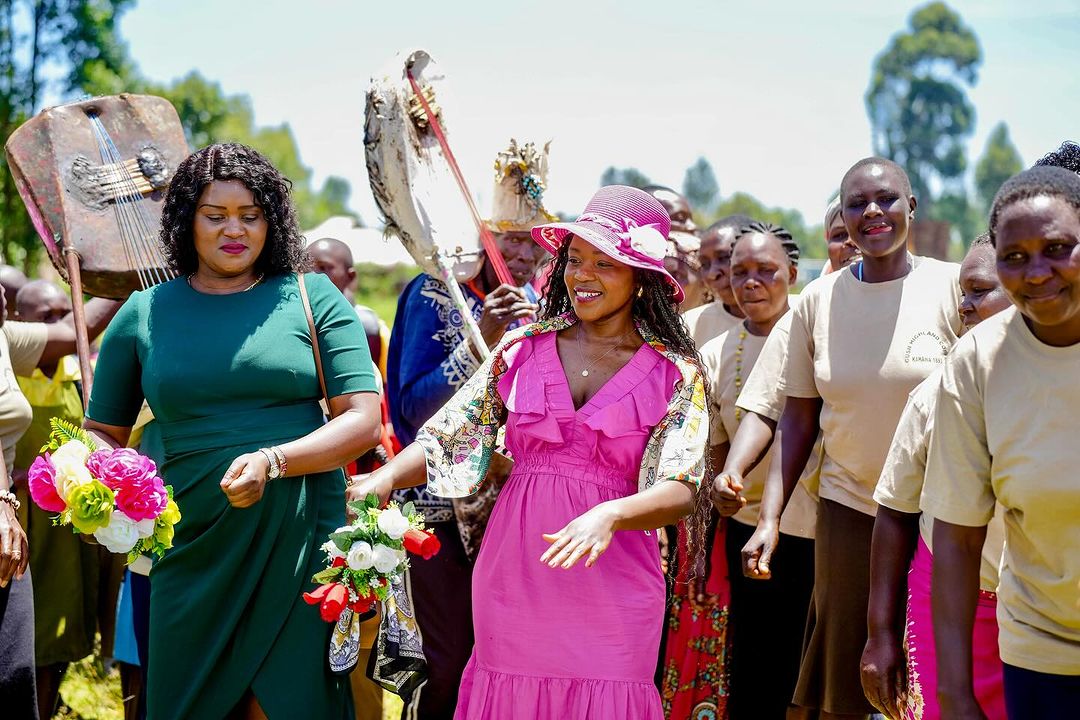
Lessons from Margaret Yumo’s Journey
There are a ton of takeaways from Margaret’s journey, but here are a few of the most important ones.
1. Risk Isn’t Always Bad
Margaret’s decision to leave a stable, high-paying job for an uncertain future in coffee wasn’t easy. But it was the right move for her. “I didn’t want to regret not trying,” she explains.
If you’re passionate about something, sometimes you’ve got to take the leap. Don’t wait for everything to be perfect—because it never will be.
2. Grit Is the Difference Maker
Building a successful business isn’t easy. There are always going to be setbacks, obstacles, and moments when you want to quit. But what separates successful entrepreneurs from everyone else is grit. Margaret kept going even when she was $50,000 in debt and didn’t know if the business would survive.
3. Stay Close to Your Mission
Margaret never lost sight of her mission: empowering women farmers. It’s easy to get caught up in scaling, in numbers, in growth. But Margaret kept her mission at the forefront of everything she did, and that’s a big reason why Kahawa 1893 has resonated with so many people.
FAQs: Everything You Need to Know About Kahawa 1893
Q: How did Margaret Yumo start Kahawa 1893?
Margaret Yumo started Kahawa 1893 after leaving her job on Wall Street. She wanted to combine her passion for coffee with her desire to empower African women farmers.
Q: What makes Kahawa 1893 unique?
Kahawa 1893 sources its beans from women farmers in Africa and includes a QR code on each bag, allowing customers to tip the farmers directly.
Q: Where can I buy Kahawa 1893?
Kahawa 1893 is available on Amazon, the company’s website, and in major retailers like Trader Joe’s, Target, and Sprouts.
Q: How did Margaret overcome financial struggles during the pandemic?
Margaret faced $50,000 in debt during the pandemic but caught a break when Trader Joe’s approached her to stock Kahawa 1893 in their stores, allowing her to scale.
Q: How does Kahawa 1893 support African women farmers?
Kahawa 1893 sources its coffee beans from African women farmers, ensuring they are paid fairly. Customers can tip the farmers directly through a QR code on the coffee bags.
Q: What are Kahawa 1893’s future plans?
Margaret plans to continue expanding Kahawa 1893’s distribution, working with more retailers and empowering more women farmers across Africa.
Conclusion: What’s Your Coffee Dream?
Margaret Yumo’s journey from Wall Street to building a $3 million coffee company isn’t just about coffee—it’s about creating change. She built a business that empowers women, supports ethical practices, and delivers high-quality coffee to consumers around the world.
But here’s the real question: What’s your passion? And are you ready to take the leap? If Margaret’s story teaches us anything, it’s that success comes from risk, resilience, and staying true to your mission.
What are you waiting for?
Talk Resumes with Wealth Waggle
Perfect your resume with AI-assisted feedback and tips (using the latest recruiting intelligence).


